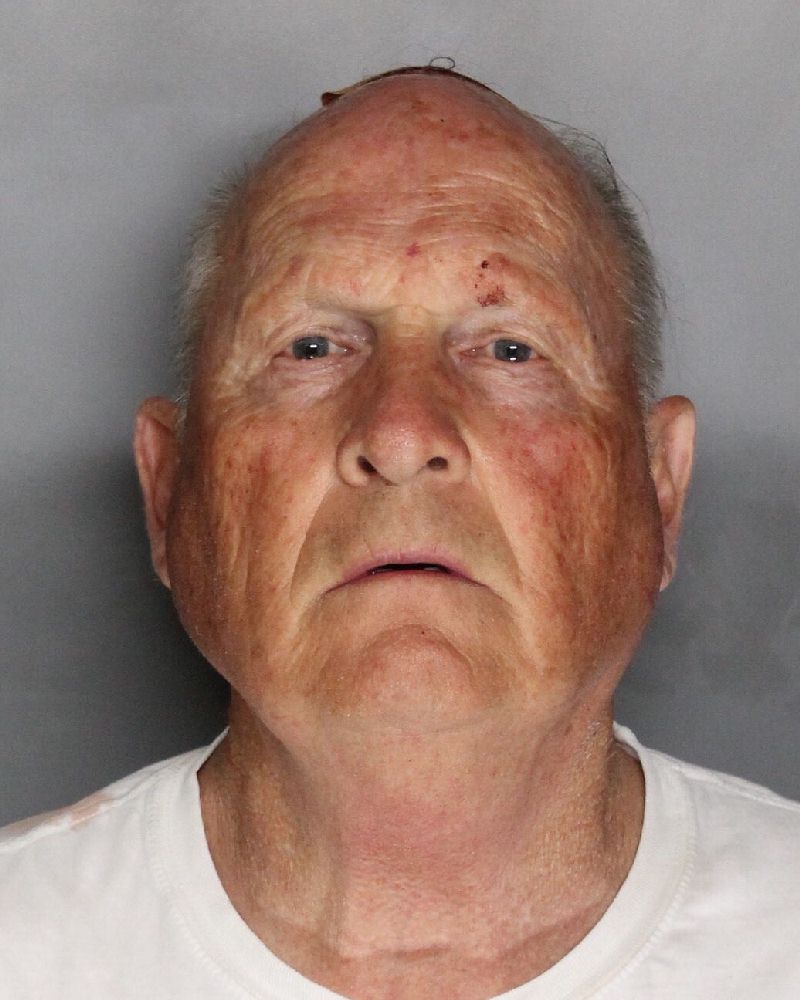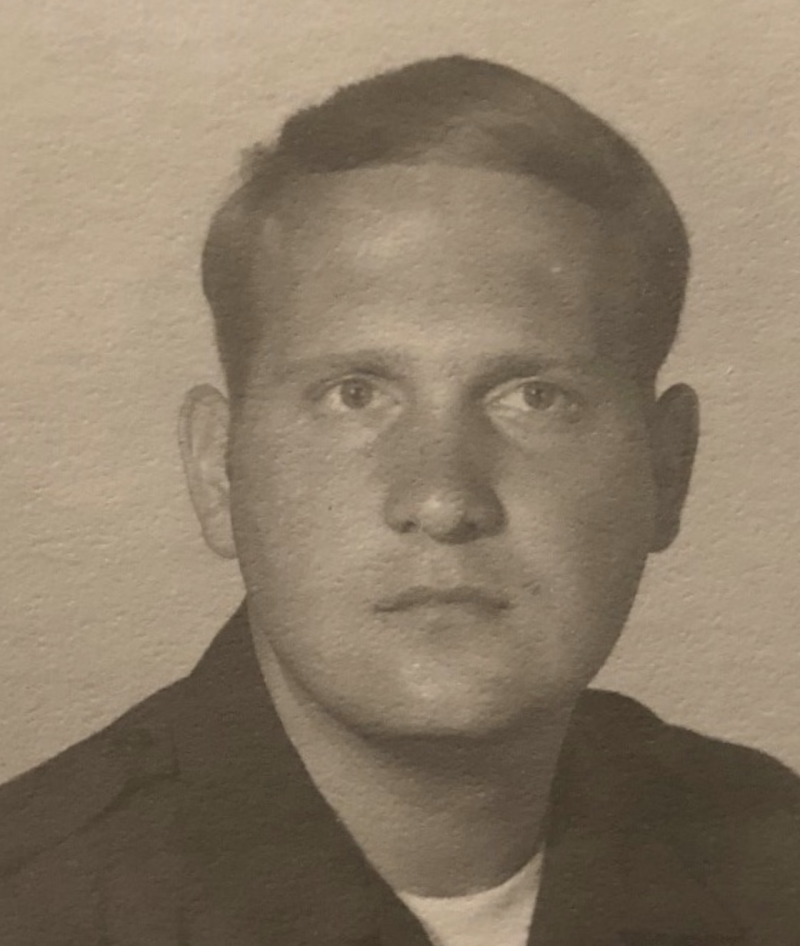72-year-old Joseph James DeAngelo was surprised when police arrived at his home and placed him under arrest. DeAngelo is suspected to be the infamous East Area Rapist, also known as the Golden State Killer, whose crimes of murder, rape, and home invasion spanned over a decade. DeAngelo, a former police officer, lived at home with family members but was alone at the time. The Sacramento County Sheriff’s Department reported that he was arrested without incident.
Authorities believe DeAngelo committed 12 murders and at least 50 rapes. The crimes of the Golden State Killer were so numerous and far-reaching throughout Sacramento to Orange County that they were often attributed to different people, and given the monikers of the Original Night Stalker, the Diamond Knot Killer, and the Visalia Ransacker. The crimes, including the rapes, were not linked to one personduntil after 2000. The crimes committed by the Visalia Ransacker were not linked to the Golden State Killer until just this year. Forensic evidence allowed police to determine that these crimes were all committed by one person. However, this did not lead them to any particular suspect.
 Sacramento Sheriff's Department
Sacramento Sheriff's Department
Finally, on Wednesday, April 25th, Joseph James DeAngelo was placed under arrest after a lengthy surveillance operation conducted by the Sacramento County Sheriff’s Department. Officers retrieved DeAngelo’s DNA from a discarded soda can, which matched the DNA evidence left at the scene by the Golden State Killer. A DNA profile was built around recovered genetic material by investigator and DNA expert Paul Holes. Using the DNA sample, he was able to find the killer’s great-great-great-grandparents, who lived during the early 1800s. From there, Holes and other investigators created elaborate family trees, using data from census records, gravesites, and commercial and police databases. This led to the creation of over 25 family trees containing thousands of relatives that branched down to the present. One of those descendants happened to be a former police officer who had purchased guns during spikes of activity by the Golden State Killer. His name: is Joseph James DeAngelo.
For decades, the Golden State Killer was thought to have some connection to law enforcement. He was profiled as possibly being a police officer, as he seemed to know exactly how to elude capture. Some of his victims also told police that he carried himself like a military man or police officer. Joseph James DeAngelo was in the Navy in the 1960s, where he sailed on the USS Canberra. He began his law enforcement career in 1973 in the town of Exeter, where he worked for three years. With fewer than 10 officers patrolling the area, DeAngelo was hard not to notice. “I think he had a bachelor’s degree, all kinds of training. He didn’t fit in with the other guys,” Farrel Ward, a former Exeter officer of 30 years told the Los Angeles Times, “we liked to joke and screw around and take the stress off of what we were doing. He was always serious.”
It was during DeAngelo’s time in Exeter that the crimes associated with a suspect then known as the Visalia Ransacker began. The attempted kidnapping of a young girl in 1975 led to her father, journalism professor Claude Snelling, being shot and killed after interrupting the crime. The suspect was never caught, but police presence in the neighbourhood increased.
DeAngelo’s next stop was the Auburn Police Department, near Sacramento. After three years of service, DeAngelo was fired in 1979 for shoplifting from a department store. The items he stole? A hammer and a can of dog repellent. However, the items shoplifted did not raise any red flags. “Law enforcement would carry dog repellent too because, like a mailman, officers go to doors and dogs chase after them,” said former Auburn Police Chief Nick Willick to the Los Angeles Times.
It was in June 1976 that the attacks began, and the modus operandi was typically the same each time. A man would enter his victim’s homes at night, go into the bedroom and shine a flashlight in their eyes. “They would see a dark figure with the ski mask on. He would then bind, have the female bind, the male individual. He would then bind the female individual with shoestrings or whatever he could find. He would then proceed to re-tie the male victim,” said Marcus Knutson, an FBI agent who investigated the East Area Rapist, in a 2016 interview.
After both victims were bound, the attacker would then explore the house, stealing small items and sometimes eating the food in the fridge. He would then move the female victims to a separate room, placing plates on the male victims’ backs, telling them if he heard the plates fall, he would return and kill them. The attacker would then disappear after his crimes were committed.
The crimes of the East Area Rapist, as he was known at the time, were prolific. “People referred to him as the boogeyman. It wasn’t a matter of if he was coming, it was when because it happened so much and it went on for so long,” said Sacramento District Attorney Anne Marie Schubert. In the years during the Golden State Killer’s crime spree, the Sacramento Police and victims of the crimes would periodically receive threatening or taunting phone calls from someone claiming to be the East Area, Rapist.
As late as 2001, when a story published in the Sacramento Bee confirmed the East Area Rapist and the Original Night Stalker to be the same person, one of the original victims received a call from someone asking her, “Remember when we played?” Before hanging up. The crimes continued until 1986 when they appeared to suddenly end. The crimes of the Golden State Killer had an immense effect on California state law. The brother of one victim successfully lobbied the state to collect DNA from criminals. The Sacramento Sheriff’s Department also created a dedicated sex crimes unit.
One of the most determined investigators into the crimes was the late true-crime writer Michelle McNamara, wife of comedian Patton Oswald. McNamara started her own investigation into the case and wrote about it on her blog in 2011. She named the perpetrator of these crimes the Golden State Killer, a name that stuck throughout the investigation. She was offered a book deal from Harper’s in 2013 after writing about the crimes for Los Angeles Magazine. The book, entitled I’ll Be Gone in the Dark, contained exhaustive research and meticulous notes McNamara had collected during her investigation.
She became consumed by the case, and it began to affect her mentally and emotionally. “There’s a scream permanently lodged in my throat now,” McNamara wrote in the book. Inside the pages of I’ll Be Gone in the Dark was a letter that Michelle wrote to the Golden State Killer. “Open the door. Show us your face. Walk into the light,” McNamara wrote. Before her work could be completed, Michelle McNamara died in her sleep on April 21, 2016, due to a heart condition exacerbated by prescription drugs.
McNamara’s husband, comedian Patton Oswalt, wanted the book to be completed. He enlisted the help of investigative journalist Billy Jensen, who worked with McNamara’s primary researcher, Paul Haynes, to finish the book. I’ll Be Gone in the Dark was released in February 2018. “This book had to be finished,” Oswalt told the New York Times, “knowing how horrible this guy was, there was this feeling of, you’re not going to silence another victim. Michelle died, but her testimony is going to get out there.”
For more than 40 years, DeAngelo was never suspected of any wrongdoing. In 1990, he began working as a truck mechanic at a Save Mart distribution center in Roseville. He retired in 2017. Save Mart’s public affairs manager Victoria Castro released a statement saying “None of his actions in the workplace would have to lead us to suspect any connection to crimes being attributed to him. We are working with the Sacramento County District Attorney’s Office on their investigation.”
Many of the law enforcement officers who worked with DeAngelo expressed surprise that he would be considered a suspect in the Golden State Killer case. “I couldn’t believe it. I was devastated. At first, I thought it was someone with the same name. ‘It can’t be the same guy,’” Ward told the Los Angeles Times, “I worked side by side with that guy. I could’ve been one of his victims, really easily. It’s kind of scary.” In a database of over 8,000 names of suspects investigators had built up over years, DeAngelo was nowhere to be found. Larry Pool, a retired Orange County Sheriff’s detective said he was not surprised the Golden State Killer had military and law enforcement training. “I don’t think this guy was really ever a cop,” Pool told the Los Angeles Times, “he used that to further what he really did.” After DeAngelo’s arrest, Patton Oswalt tweeted, “I think you got him, Michelle.”
Click on ‘Next Post’ to read another story and don’t forget to SHARE this with your friends on Facebook.




